Where do fishing spiders live information
Home » Background » Where do fishing spiders live informationYour Where do fishing spiders live images are ready. Where do fishing spiders live are a topic that is being searched for and liked by netizens now. You can Find and Download the Where do fishing spiders live files here. Find and Download all royalty-free photos.
If you’re searching for where do fishing spiders live images information linked to the where do fishing spiders live interest, you have come to the ideal blog. Our site always gives you hints for viewing the maximum quality video and image content, please kindly search and find more enlightening video content and graphics that match your interests.
Where Do Fishing Spiders Live. Giant fishing spider Ancylometes bogotensis preying upon an adult jumping guabine in the Arima Valley. Eleven family members are documented fish-catchers and others may do so as well. Not only can these large spiders they have a legspan of about 12cm pounce on fish that find themselves temporarily out of the water they can also dive - and even SWIM -. White banded fishing spider D.
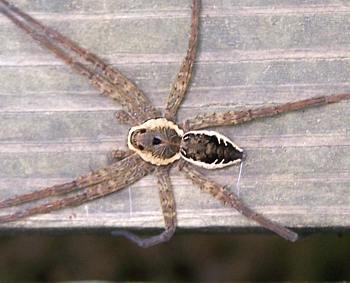 Nursery Web Fishing Spiders Of Kentucky University Of Kentucky Entomology From uky.edu
Nursery Web Fishing Spiders Of Kentucky University Of Kentucky Entomology From uky.edu
Albineusfound in the SE. North America is particularly rich in Fishing Spiders most of which are classified in the family Pisauridae. Like its other cousins the female dark fishing spider also engages in an act of sexual cannibalism eating off the male after mating. Giant fishing spider Ancylometes bogotensis preying upon an adult jumping guabine in the Arima Valley. Belonging to the Pisauridae family this species is similar to the striped fishing spider due to its physical similarities. Fishing spiders also called dock or wharf spiders like to live in waterfront properties near lakes ponds marshes reservoirs rivers streams and woods.
Big female fishing spiders tend to be the ones we see most often on the dock.
Like its other cousins the female dark fishing spider also engages in an act of sexual cannibalism eating off the male after mating. Big female fishing spiders tend to be the ones we see most often on the dock. Gertschi only in AZ and NM Gila River area Fishing spider with egg case. Also known as Nursery Web Spiders some live far from water and eat insects while others move between aquatic and terrestrial habitats. Giant fishing spider Ancylometes bogotensis preying upon an adult jumping guabine in the Arima Valley. They are able to run across the surface of water much like water striders and will dive for prey including small tadpoles or aquatic insects.
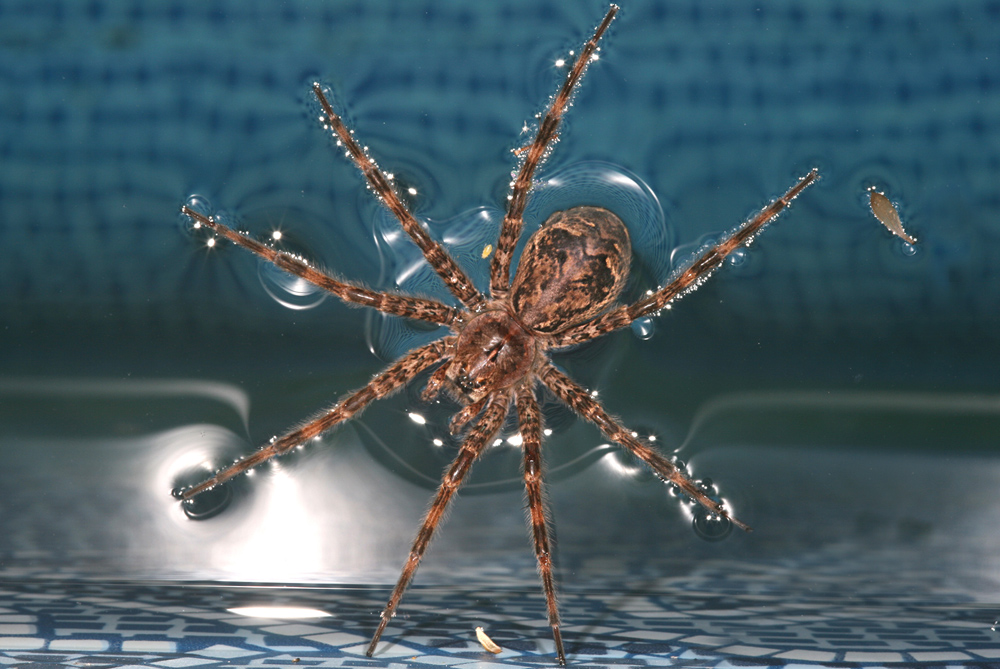 Source: m.espacepourlavie.ca
Source: m.espacepourlavie.ca
US Okefinoke fishing spider D. Whether your cabin is in Michigan Wisconsin Minnesota Manitoba Ontario Quebec or any other lake-country area the dock spider is a regular and often-feared companion at the cottage. Insects generally go where they please typically driven by diet environmental changes and or mating habits. Belonging to the Pisauridae family this species is similar to the striped fishing spider due to its physical similarities. Instead this location offers them a prime area to be able to find lots of food and shelter.
 Source: infinitespider.com
Source: infinitespider.com
Swimming pools boathouses and boats may also become infested. They dont need the water or the moisture there. The Dark Fishing Spider. Waiting for prey to come within striking distance. Not only can these large spiders they have a legspan of about 12cm pounce on fish that find themselves temporarily out of the water they can also dive - and even SWIM -.
 Source: infinitespider.com
Source: infinitespider.com
Waiting for prey to come within striking distance. Waiting for prey to come within striking distance. Okefinokensis found in Ga and Fla New Mexico fishing Spider D. US Okefinoke fishing spider D. They overwhelm their prey with speed and cunning.
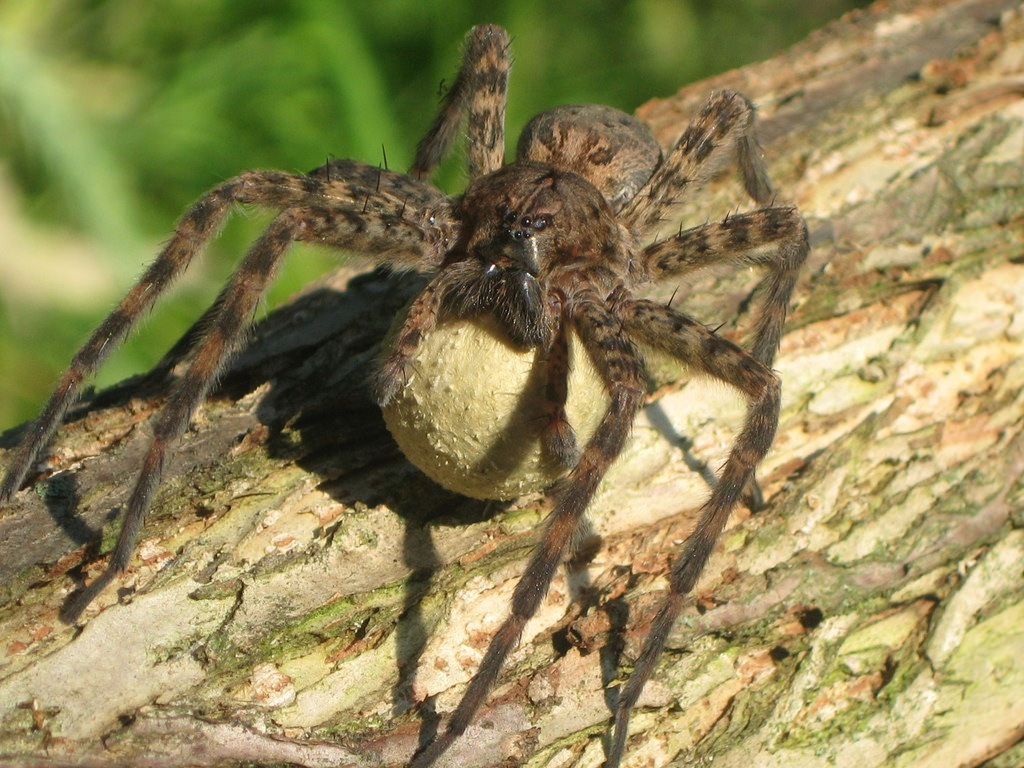 Source: spiderbytes.org
Source: spiderbytes.org
They dont need the water or the moisture there. Dock spiders are widely distributed throughout cottage country. Eleven family members are documented fish-catchers and others may do so as well. Fishing spiders are amphibious and are typically found in moist areas especially along the edges of streams and lakes. Like its other cousins the female dark fishing spider also engages in an act of sexual cannibalism eating off the male after mating.
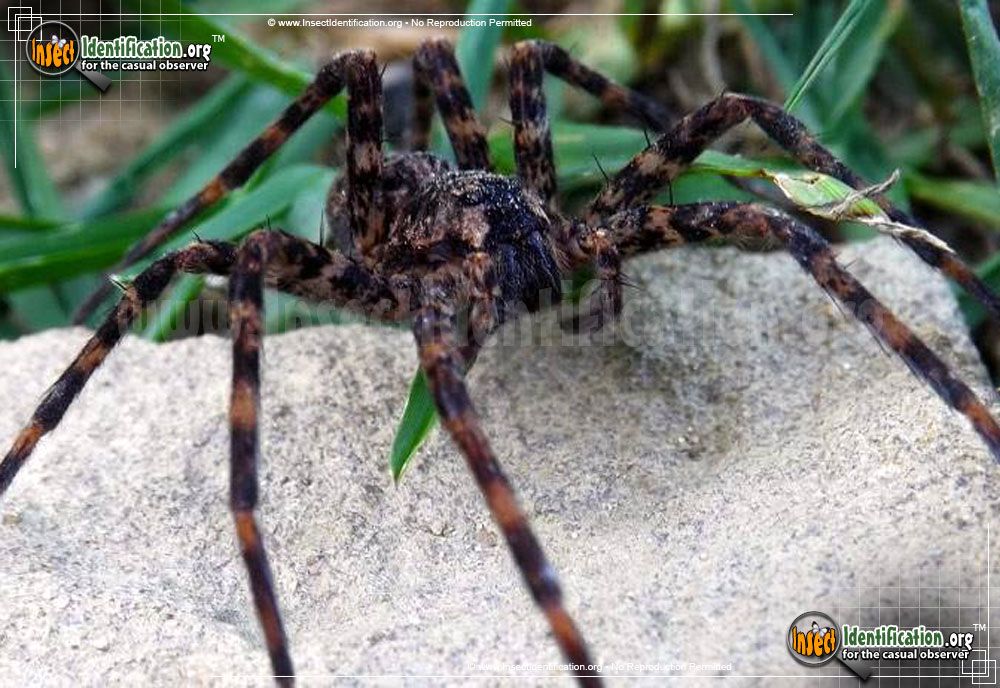 Source: insectidentification.org
Source: insectidentification.org
Albineusfound in the SE. Waiting for prey to come within striking distance. Dolomedes tenebrosus Dark Fishing Spider has been sighted in the following countries. Not only can these large spiders they have a legspan of about 12cm pounce on fish that find themselves temporarily out of the water they can also dive - and even SWIM -. Albineusfound in the SE.
 Source: mdc.mo.gov
Source: mdc.mo.gov
Not only can these large spiders they have a legspan of about 12cm pounce on fish that find themselves temporarily out of the water they can also dive - and even SWIM -. Fishing spiders do not spin webs to capture their prey. Giant fishing spider Ancylometes bogotensis preying upon an adult jumping guabine in the Arima Valley. Fishing spiders genus Dolomedes live around ponds slow-moving streams swampy areas and other damp places. Not only can these large spiders they have a legspan of about 12cm pounce on fish that find themselves temporarily out of the water they can also dive - and even SWIM -.
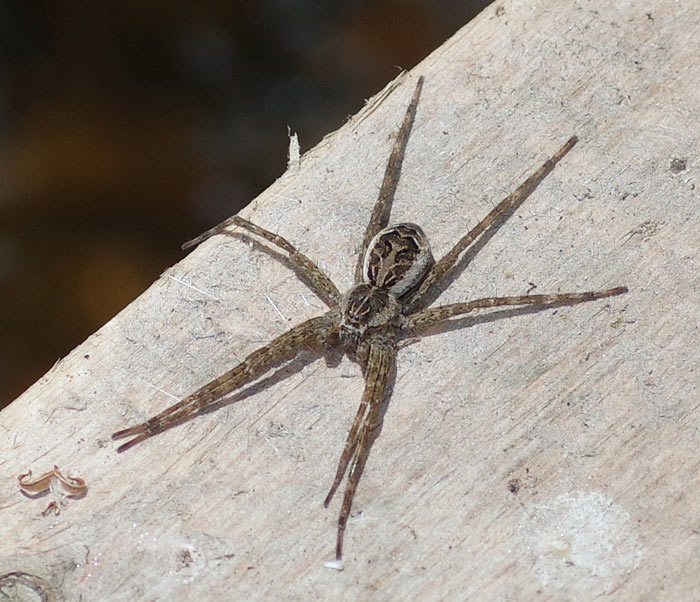 Source: uwm.edu
Source: uwm.edu
Fishing spiders genus Dolomedes live around ponds slow-moving streams swampy areas and other damp places. Instead this location offers them a prime area to be able to find lots of food and shelter. They overwhelm their prey with speed and cunning. White banded fishing spider D. The Dark Fishing Spider.
 Source: birdingmakiling.blogspot.com
Source: birdingmakiling.blogspot.com
Fishing spiders do not spin webs to capture their prey. Fishing spiders genus Dolomedes live around ponds slow-moving streams swampy areas and other damp places. They overwhelm their prey with speed and cunning. Also known as Nursery Web Spiders some live far from water and eat insects while others move between aquatic and terrestrial habitats. Fishing spiders are amphibious and are typically found in moist areas especially along the edges of streams and lakes.
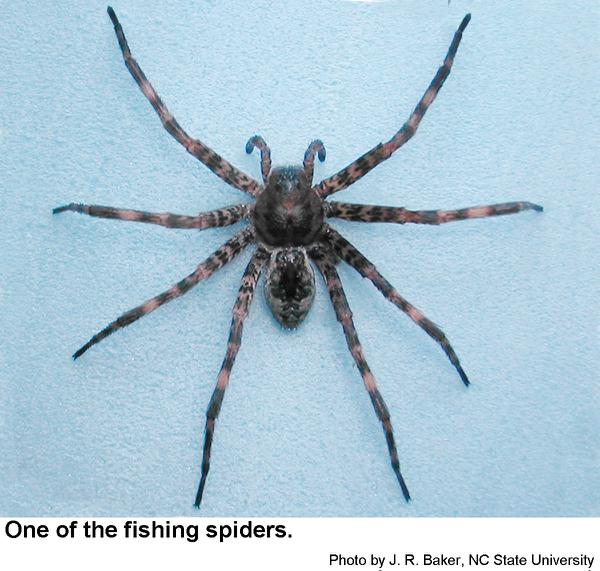 Source: content.ces.ncsu.edu
Source: content.ces.ncsu.edu
Not only can these large spiders they have a legspan of about 12cm pounce on fish that find themselves temporarily out of the water they can also dive - and even SWIM -. Albineusfound in the SE. Like its other cousins the female dark fishing spider also engages in an act of sexual cannibalism eating off the male after mating. Some live along the edges of lakes and ponds too. They are able to run across the surface of water much like water striders and will dive for prey including small tadpoles or aquatic insects.
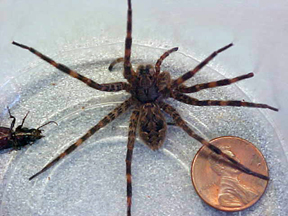 Source: canr.msu.edu
Source: canr.msu.edu
Like its other cousins the female dark fishing spider also engages in an act of sexual cannibalism eating off the male after mating. Fishing spiders genus Dolomedes live around ponds slow-moving streams swampy areas and other damp places. Big female fishing spiders tend to be the ones we see most often on the dock. Belonging to the Pisauridae family this species is similar to the striped fishing spider due to its physical similarities. StatesTerritories shown above are a general indicator of areas inhabited by the Fishing Spider.
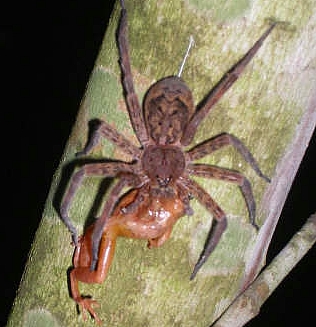 Source: uky.edu
Source: uky.edu
Eleven family members are documented fish-catchers and others may do so as well. Dolomedes tenebrosus Dark Fishing Spider has been sighted in the following countries. Gertschi only in AZ and NM Gila River area Fishing spider with egg case. Whether your cabin is in Michigan Wisconsin Minnesota Manitoba Ontario Quebec or any other lake-country area the dock spider is a regular and often-feared companion at the cottage. Belonging to the Pisauridae family this species is similar to the striped fishing spider due to its physical similarities.
 Source: hortnews.extension.iastate.edu
Source: hortnews.extension.iastate.edu
Eleven family members are documented fish-catchers and others may do so as well. StatesTerritories shown above are a general indicator of areas inhabited by the Fishing Spider. Like its other cousins the female dark fishing spider also engages in an act of sexual cannibalism eating off the male after mating. Dock spiders are widely distributed throughout cottage country. The Dark Fishing Spider.
 Source: nationalgeographic.com
Source: nationalgeographic.com
Fishing spiders also called dock or wharf spiders like to live in waterfront properties near lakes ponds marshes reservoirs rivers streams and woods. Fishing spiders genus Dolomedes live around ponds slow-moving streams swampy areas and other damp places. Instead this location offers them a prime area to be able to find lots of food and shelter. Dolomedes tenebrosus Dark Fishing Spider has been sighted in the following countries. Waiting for prey to come within striking distance.
 Source: infinitespider.com
Source: infinitespider.com
Belonging to the Pisauridae family this species is similar to the striped fishing spider due to its physical similarities. Some live along the edges of lakes and ponds too. The Dark Fishing Spider. As horrifying as fishing spiders might appear they are utterly harmless to. They dont need the water or the moisture there.
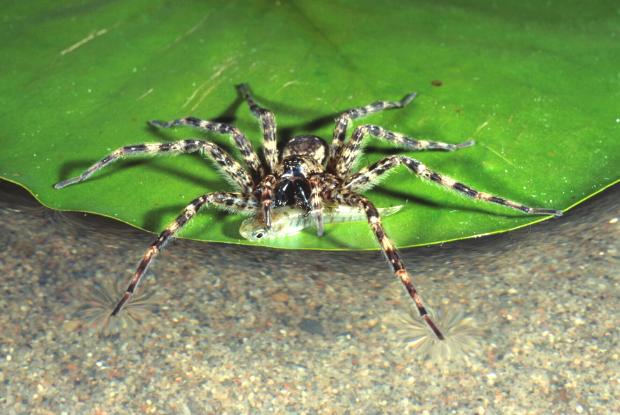 Source: m.espacepourlavie.ca
Source: m.espacepourlavie.ca
Fishing spiders do not spin webs to capture their prey. Fishing spiders do not spin webs to capture their prey. Big female fishing spiders tend to be the ones we see most often on the dock. Canada Pakistan United States. Fishing spiders also called dock or wharf spiders like to live in waterfront properties near lakes ponds marshes reservoirs rivers streams and woods.
 Source: hortnews.extension.iastate.edu
Source: hortnews.extension.iastate.edu
Also known as Nursery Web Spiders some live far from water and eat insects while others move between aquatic and terrestrial habitats. Fishing spiders are amphibious and are typically found in moist areas especially along the edges of streams and lakes. They can skate across the surface of the water and even dive beneath the surface to feed on small fish tadpoles and aquatic insects. White banded fishing spider D. The Dark Fishing Spider.
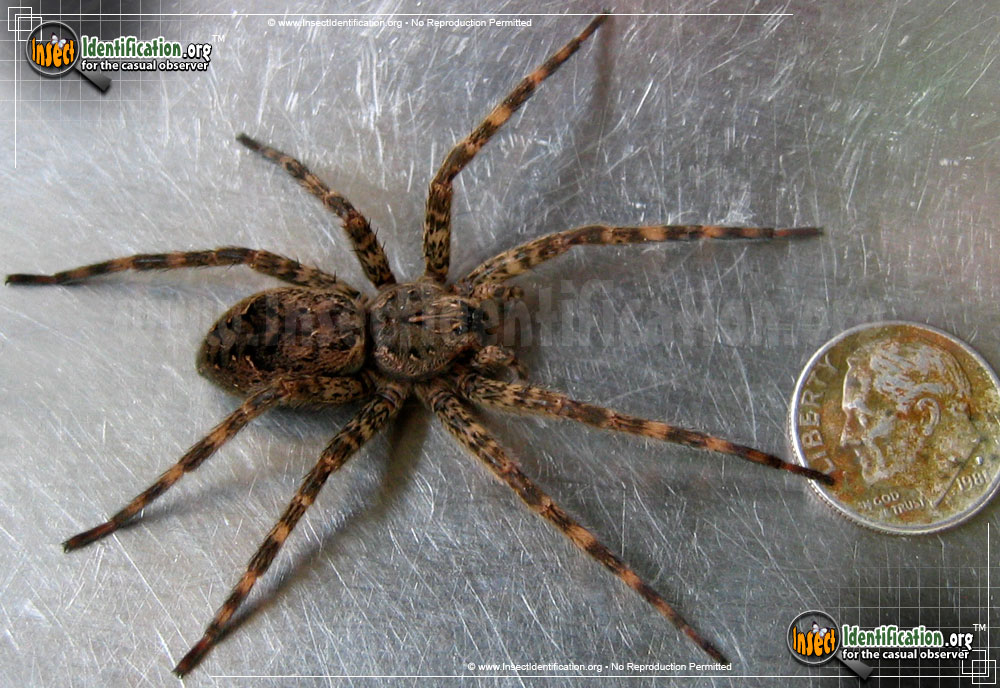 Source: insectidentification.org
Source: insectidentification.org
StatesTerritories shown above are a general indicator of areas inhabited by the Fishing Spider. StatesTerritories shown above are a general indicator of areas inhabited by the Fishing Spider. White banded fishing spider D. Giant fishing spider Ancylometes bogotensis preying upon an adult jumping guabine in the Arima Valley. Also known as Nursery Web Spiders some live far from water and eat insects while others move between aquatic and terrestrial habitats.
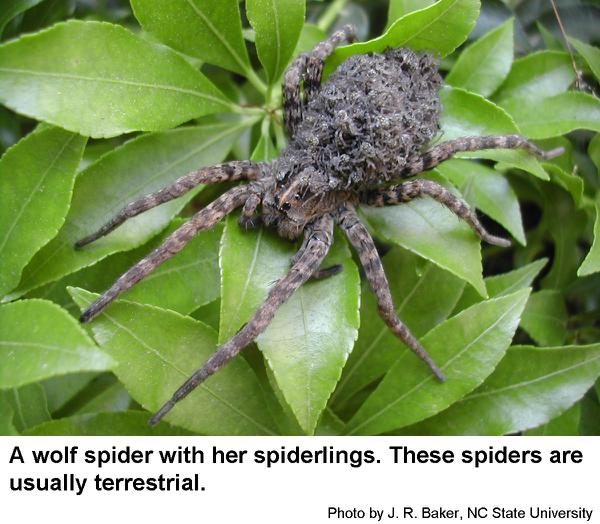 Source: content.ces.ncsu.edu
Source: content.ces.ncsu.edu
Some live along the edges of lakes and ponds too. Big female fishing spiders tend to be the ones we see most often on the dock. Instead this location offers them a prime area to be able to find lots of food and shelter. US Okefinoke fishing spider D. Insects generally go where they please typically driven by diet environmental changes and or mating habits.
This site is an open community for users to share their favorite wallpapers on the internet, all images or pictures in this website are for personal wallpaper use only, it is stricly prohibited to use this wallpaper for commercial purposes, if you are the author and find this image is shared without your permission, please kindly raise a DMCA report to Us.
If you find this site beneficial, please support us by sharing this posts to your favorite social media accounts like Facebook, Instagram and so on or you can also save this blog page with the title where do fishing spiders live by using Ctrl + D for devices a laptop with a Windows operating system or Command + D for laptops with an Apple operating system. If you use a smartphone, you can also use the drawer menu of the browser you are using. Whether it’s a Windows, Mac, iOS or Android operating system, you will still be able to bookmark this website.